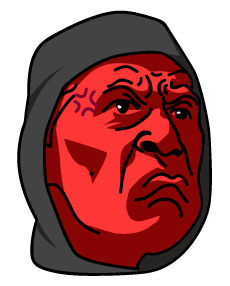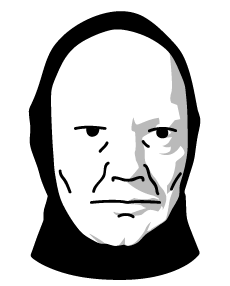The web development pattern
In the early 1930s, mathematics was a mess, then came the Turing Machine and the Church-Turing thesis, and suddenly all of it clicked. Mind you, I never quite understood the famous thesis. My mind is unable to define its object of fascination, "function that can be solved by an effective procedure", without bringing a computer into the picture.
In the early 2000s, web design was a mess, then came the Kate Ling Hu (凌胡) pattern and the pets.com poem. Mind you, I think it's hard for anyone born after the turn of the millennium to comprehend the pattern as it appeared. Nowadays every design is an imperfect or incomplete copy of the pattern, but believe it or not, design existed before it did, and some believe it may exist beyond it.
Using the Wayback machine you can explore how the internet looked before the pattern's introduction. Back then it was a chaotic mess consisting mainly of loads of HTML and surprisingly many images, considering how limited bandwidth was, sprinkled with some questionable CSS and occasionally a cautiously tiny amount of javascript (keep in mind no two browsers ran the same javascript, and jquery wasn't a thing quite yet).
Then pets.com opened up its new position, "Chief of web design", hiring the mysterious programming and design protegee Kate L. Hu. She made gradual improvements to pets.com, as though setting the foundations. Standardized the color pallet, made buttons bigger and plainer with a tastefully shy shadow to demarcate the tiniest bit of elevation, simplified menu trees.
Initially, there was some pushback on Miss Hu's design, but the more she worked the more everyone started to agree with her views. It was almost "obvious" that she was doing the right thing. On her weekly meetings, the others would bring various suggestions about changing the design, and more than half the time she'd nod her head, then reveal that the suggested change had been already implemented.
A page was to be broken down into three "navigation", "filtering", and "content", with the latter ideally occupying at least 80% of the real estate. The main menu button should be indicated by a heptagon with brightly colored dots demarcating each angle. The "content" should be split into easy to digest items, no more than 200 characters worth of text, and always an accompanying image. Besides the main color scheme, you should very tamely use 7 other colors in a few exact places: red, blue, yellow, purple, green, orange, and the special "pets.com TM" color... believe it or not, back then we didn't have a word for the 7th color, it came as a surprise that one could even produce it using RGB. The user should never have to press next, whenever possible pages should implement "infinite scroll" and allow for the consumption of ever more content.
Anyway, the days passed and pets.com became ever more popular. People would see the website at a friend's place, then that very same night they'd go out and buy a computer of their own. Whatever Kate L. Hu was doing, that, that was IT. The C-suite of pets.com was set on making the news again, due to (leaking) the prize for her contribution, a 9-digits Christmas bonus.
On the way to her office, they were informed the beta version of the "final website" had just been deployed that morning. Everyone in the office seemed oddly calm for a release day though. Gently swinging in their chairs, staring blankly at the monitors, every now and then giving their mouse a tentative jab.
Then they found Kate in her office, "bent" upon a piece of poetry:
Seven rules, here on Earth,
Simple squares of pleasing girth.
Text as large as text can be,
Scroll down, down infinity.
Let them gloat,
Let them con'sume.
Give them same,
Yet make it different
Verse, then image,
Then incentive.
On the symbol of control,
Seven points of color thus:
<the writing became unintelligible>
The first to walk in was the CFO, and 20 years later he still hasn't spoken a single word since that day. Her body gave raised a lot of questions:
How could she do that to herself with just a ballpoint pen?
How was she able to last this long before expiring?
How comes she didn't pass out from the pain?
Did nobody hear her screams? Or did she do all of this without even screaming?... either prospects terrible to behold
Are human teeth supposed to look like that?
What's that glint strange color reflecting off her blood?
After the initial shock lessened, the police were called. But by the time they had arrived, the body was gone.
Then they realized the entire web development team was catatonic, slowly swinging their heads back and forward, scrolling down, down, ever down. Every now and then clicking the mesmerizingly-shaped button affixed to every piece of content, every click making it shine for just a moment with that 7th color.
On the 7th of December, in the year 2000, pets.com was shut down. The casualties were later estimated by the CIA's World Factbook:
- Roughly 21,600 users now suffering from a completely debilitating form of dementia, require 24/7 medical care in a psychiatric ward
- Roughly 74,200 users suffering from mild-to-severe psychiatric symptoms, ranging from schizophrenia to depression, some still self-sufficient and able to hold down a simple job, others will require part-time at-home care.
- Roughly 89,500 additional users self-report subclinical psychiatric symptoms.
- The psychiatrist reports seem to indicate that no to mild symptoms were caused by less than 6 minutes of using the beta version of the website. The debilitating dementia seems to arise sometime around the 14-hour mark.
A class-action lawsuit was launched against pets.com, but went nowhere, the company was bankrupt by mid-2001, 280 out of their 340 employees were now under in-patient psychiatric care, 254 of those still are, the rest have died.
The problem with the pattern is that it kept popping up. The secret services did their best to clear all traces of the poem, of pets.com, and related design documents. But once people had seen the pattern, it seemed obvious. The further you got into designing it, the more obvious it seemed, up to the point where you couldn't stop yourself but keep going. Suicide by web design was very rare but gruesome
Now that the pattern is known we can't help but design using it, all our fancy javascript frameworks are made based on the pattern, all other websites are doing it. Of course, we never complete the pattern, companies are very careful to supervise their web development teams and stop them before their work becomes "harmful to the user".
Still, you can't deny that the older a website gets, the more homogenous it becomes with all the other old websites. Every website starts with a different part of the pattern, but as they implement more and more of it, they start being more similar.
Some activist groups here and there claim that the pattern is inherently harmful, that if it can drive people mad when close to completion, it ought be harmful even when mostly incomplete.
But no web developer knows how to design without the pattern anymore, and even if they did, who would want to build a website any other way? Who would want to visit it? Who would stay on it?
Every now and then a company does get to close, and a few overly susceptible people end up in the psych ward. Every now and then a developer goes loose and tries completing the pattern. Every now and then a CEO rants about how we should put aside profits and make a joint effort to never again use the pattern. Every now and then a CEO talks too much and amicably retires. Every now and then a shady vendor on Agora (darkweb marketplace) claims to be selling the (real) poem by Kate L. Hu, but the offer is usually gone in less than 1/3rd of a day.
Published on: 2020-12-30




